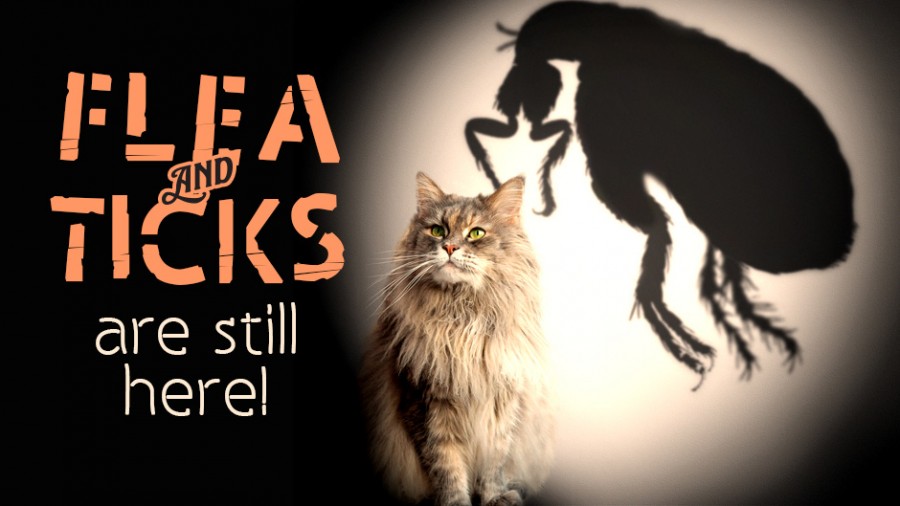The onset of fall is always an interesting time. While there's no denying we'll all miss the long, hazy summer days, there's a variety of delights to be enjoyed in the forthcoming months: Halloween, the changing color of the leaves, and the freedom from worrying about our pets and their exposure to fleas and ticks"¦ right?
Well, while there's no denying that Halloween is a delight and the leaves changing color is an annual treat, the final point isn't quite correct. Many pet owners assume that fleas and ticks are predominantly a problem for warm weather; pests flourish in spring and summer, then begin to die off as the colder months set in. The natural conclusion many pet owners come to is that they only need be concerned with flea and tick treatments between March and August – but this isn't actually the case.
Fleas and ticks are resilient creatures, and while their population levels do tend to decline over the cooler months, they still pose a threat to domestic pets. Fleas and ticks are more than capable of finding warmer areas to enjoy in the winter; beneath log piles, for example, or even inside a home. The average flea lives for over 100 days which, with continued breeding in a warm space, means they are more than capable of surviving a winter. Ticks live even longer still – up to three years – so providing they find somewhere cozy, they'll easily make it through to spring.
So what does this mean for owners who are concerned with ensuring optimal pet health? Simple: keep using flea and tick treatments throughout the year. There are plenty of products that you can buy in our online store to achieve this, all of which will be just as effective at preventing tick and flea infestations during fall and winter as they are in the warmer months.
It's worth noting that the need for effective flea and tick prevention is significant for both indoor and outdoor pets. Many owners of indoor cats, for example, neglect flea and tick treatments due to the belief that their cat won't encounter any such pests, so prevention is not necessary. As we briefly touched on above, this simply isn't true – fleas and ticks will, if provided with the opportunity, migrate into a house for fall and winter, which means that even indoor-only pets are vulnerable. If you choose not to prevent fleas and ticks, you're essentially setting up a lovely fall and winter home for these pests: you'll warm the air, ensure they're nice and cozy, and provide a pet for them to snack on – while being a good host is generally considered a positive, catering to ticks and fleas in such a way is probably a step too far!
So, whether you have an indoor or outdoor pet, good pet safety practice dictates that it's important to maintain your flea and tick prevention methods throughout the fall and winter periods. Preventive treatment from Minnesota Veterinary Hospital is quick and easy to apply, so you can soon get back to enjoying all the delights the cooler seasons have to offer!

